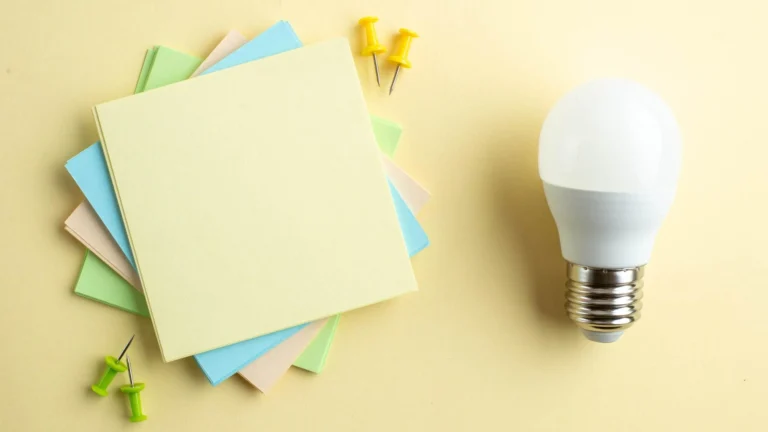Table of Contents
Utility bills add up fast, from electricity and heating to cooling and water, and small, smart changes at home often deliver the biggest wins. This guide gives you 15 energy-saving tips that lower utility bills that families can implement right away. Each tip explains why it works, how to do it, and what kind of savings or payoff you can expect over time. Read on for easy wins, slightly bigger fixes, and a simple plan to track progress so you actually see your bills fall. As a bonus, we also explain how the Beem app plays a key role in this process.
Why saving energy matters
Lowering energy use isn’t only good for the planet; it makes your monthly budget healthier and reduces stress. Even modest reductions, from 5 to 15%, can free up enough money for groceries, a small emergency fund, or a weekend treat. The best part: many energy moves are one-time efforts (seal a leak, swap a bulb) that continue to pay back for years.
Tip 1: Lower your thermostat by 2–3°F (winter & summer adjustments)
Why it works: Small temperature changes yield significant heating/cooling savings because HVAC systems are the largest household energy users.
How to do it: Program your thermostat to drop 2–3°F at night and when the house is empty. In summer, raise the cooling setpoint slightly during the day and use fans to feel cooler without overusing AC.
Payoff: Often 5–10% on heating/cooling costs over a season.
Tip 2: Install a programmable or smart thermostat
Why it works: Automation removes guesswork and prevents wasting energy when no one’s home.
How to do it: Replace an old dial thermostat with a programmable or smart model and set schedules that match your family’s routine; many save energy by adjusting temperature based on presence.
Payoff: Smart thermostats can cut heating/cooling use by 8–12% annually when used properly.
Tip 3: Seal drafts and insulate key spots (doors, windows, attic)
Why it works: Heat loss/gain through gaps makes your HVAC run longer and harder.
How to do it: Use weatherstripping on doors, caulk gaps around windows, and add attic insulation where the R-value is low. Start with visible drafts in living areas and work toward the attic.
Payoff: Upgrading insulation or sealing leaks can reduce overall energy bills by 10–20% in many homes. Here’s How to Save on Your Energy Bill in Winter
Tip 4: Swap old bulbs for LEDs (everywhere)
Why it works: LEDs use 75–90% less energy than incandescent bulbs and last many times longer.
How to do it: Replace high-use bulbs first: kitchen, living room, porch, and bathroom lights. Buy dimmable LEDs for fixtures with dimmers.
Payoff: A single LED replacement can save a few dollars per year per bulb, but across a house, savings compound to noticeable amounts.
Tip 5: Use smart power strips and unplug phantom loads
Why it works: Many devices draw power even when “off”, like phone chargers, consoles, and cable boxes. Those phantom loads add up.
How to do it: Plug clusters of electronics into smart power strips that cut power when devices are idle. Unplug chargers and small appliances when not in use.
Payoff: Households can save $50–$200 per year, depending on how many devices are unnecessarily drawing power.
Tip 6: Clean and maintain HVAC filters & systems regularly
Why it works: Dirty filters reduce airflow and efficiency, causing higher energy use and wear on equipment.
How to do it: Replace or clean filters every 1–3 months (depending on type and household pets). Schedule annual HVAC checkups.
Payoff: Better efficiency, fewer repairs, and a longer HVAC lifespan. Small maintenance can save a few hundred dollars over time.
Tip 7: Seal and insulate hot water pipes; lower water heater temp
Why it works: Heat lost from uninsulated pipes and overly hot water wastes energy.
How to do it: Insulate exposed hot water pipes and set the water heater to 120°F (safe and energy efficient). Use a water heater blanket if your unit is older.
Payoff: Lower water heating costs, often 7–10% savings on water heating bills.
Tip 8: Use cold water for laundry and wash full loads
Why it works: Heating water accounts for a big portion of washing machine energy use. Full loads maximize energy per garment.
How to do it: Use cold-water settings for most loads, and run full loads when possible. Air-dry when weather/space allows.
Payoff: Could cut laundry energy use by 50–75% compared to frequent warm-water small loads.
Tip 9: Replace old appliances with ENERGY STAR or high-efficiency models
Why it works: New appliances use significantly less energy and water compared with very old units.
How to do it: Prioritize replacing the biggest energy hogs first: refrigerator over 10 years old, older washers/dryers, or HVAC systems. Look for ENERGY STAR-certified models.
Payoff: Long-term savings and sometimes rebates/credits offset initial cost. These are big wins when timed right.
Tip 10: Cook smarter: use lids, microwaves, and pressure cookers
Why it works: Stovetops and ovens use a lot of energy; efficient cooking reduces heat escape and time.
How to do it: Use lids on pots, match pan size to burner, use a microwave or pressure cooker for smaller meals, and bake several dishes together.
Payoff: Reduced cooking energy and faster meals. These are modest monthly savings but big convenience gains.
Tip 11: Switch to low-flow showerheads and fix leaks immediately
Why it works: Reducing hot water use directly lowers water heating costs and water bills.
How to do it: Install EPA WaterSense or low-flow showerheads and check faucets/toilets for leaks, even small drips add up.
Payoff: Can cut water heating costs and water usage by 10–20%, plus lower municipal water bills.
Tip 12: Shade windows and use reflective films or curtains in summer
Why it works: Blocking solar gain reduces indoor temperature and AC workload.
How to do it: Use blinds, thermal curtains, or reflective window films on sun-facing windows. Plant shade trees if you can. They’re a long-term investment.
Payoff: Lower cooling costs during peak months; trees and investment yield multi-year returns.

Tip 13: Run dishwasher fully loaded and use energy-saving cycles
Why it works: Dishwashers use less water and energy per dish than hand-washing when run full. Energy modes and air-dry settings save more.
How to do it: Scrape (don’t pre-rinse) and run full loads on eco or low-temp settings. Turn off the heated dry and open the door to air-dry.
Payoff: Noticeable reductions in water and energy use over time versus frequent partial cycles.
Tip 14: Regularly defrost manual-defrost refrigerators and keep them organized
Why it works: Frost buildup reduces efficiency; cluttered refrigerators run harder.
How to do it: Defrost when frost is 1/4″ thick, clean coils, and keep airflow around the fridge. Replace old door seals if worn.
Payoff: Better fridge performance, longer life, and steady energy savings.
Tip 15: Use a whole-home energy checklist and make a simple plan
Why it works: One-off fixes help, but a checklist ensures you catch cumulative leaks and maintenance needs that silently add to bills.
How to do it: Walk through each room annually: check insulation, window seals, HVAC filters, drip leaks, appliance age, and lighting. Schedule fixes by priority (safety → efficiency → comfort).
Payoff: A planned approach turns scattered savings into sustained bill reductions and prevents emergencies that cost more.
Small upgrades that punch above their weight (cost-effective investments)
- LED upgrades + dimmers: Low cost, immediate payback.
- Smart thermostat or Wi-Fi vents: Better control equals lower runtime.
- Pipe insulation and water heater blanket: Cheap materials, steady savings.
- Attic insulation or air-sealing: Higher upfront cost, big multi-year payback.
These are the moves worth considering when you’re ready to invest a bit for enduring savings.
How to track your energy savings (measure what matters)
- Establish a baseline: Keep copies or photos of the last 12 months’ utility bills to understand seasonal patterns.
- Track monthly usage (kWh, therms, gallons): Don’t only track dollars. Usage shows true efficiency gains even if rates change.
- Log changes & dates: Note when you sealed ducts, replaced bulbs, or set a thermostat schedule so you can correlate actions to usage drops.
- Set small targets: Aim for 5% savings in 3 months, then 10% by the year’s end. Small, measurable goals are motivating.
- Recheck annually: Compare the same months year-over-year to account for weather differences.
Use a simple spreadsheet, energy-tracking app, or photos of each month’s bill. The important thing is consistency.
Common mistakes that waste time and money (and how to avoid them)
- Focusing only on cheap fixes: Low-cost fixes help, but if your home lacks insulation or HVAC is failing, place priority on those bigger issues.
- Over-programming thermostats: Frequent manual overrides can negate smart scheduling. Set and trust the schedule.
- Neglecting maintenance: Dirty filters, clogged vents, or failing seals undo efficiency gains fast.
- Chasing gadgets that don’t fit your home: Beware one-size gadgets; choose improvements that match your home’s real problems.
- Not checking incentives: Many utilities and local governments offer rebates for insulation, efficient appliances, or heat pump installs, missing them can make upgrades costlier. Learn How to Save on Household Energy: Plug Loads and Thermostat Rules
How small savings free up cash, and how Beem helps you keep it
Saving energy creates real, usable cash each month. That extra $25–$75 can fund groceries, a kid’s activity, or your emergency stash. A few practical ways to use savings with the Beem app:
- Automate the win: Route a portion of monthly energy savings into a Beem savings pot (label it “Energy Savings” or “Home Upgrades”) so the money isn’t accidentally spent.
- Plan upgrades: Use automated micro-savings to build toward an attic insulation or efficient HVAC upgrade. Small amounts stack into a down payment.
- Bridge tight months: If an urgent home repair or energy upgrade is needed before payday, Everdraft™ offers access to $10–$1,000 instantly with no interest and no credit checks, letting you avoid overdraft or predatory loans. At the same time, you implement fixes that cut bills long-term.
Energy efficiency plus financial tools create a feedback loop: lower bills → saved cash → targeted upgrades → even lower bills.
Quick 30-day action plan (start saving this month)
- Week 1: Replace 5 highest-use bulbs with LEDs; change HVAC filter; set thermostat schedule.
- Week 2: Seal drafty doors/windows with weatherstripping and caulk.
- Week 3: Insulate hot water pipes and lower water heater temp to 120°F.
- Week 4: Use the dishwasher/washing machine on full, eco cycles, and track your first month’s energy usage.
Repeat the plan quarterly and add one upgrade (attic insulation, new thermostat) as your savings grow.
Keep it practical: steady steps beat perfection
Lowering utility bills isn’t about drastic lifestyle changes; it’s about steady, sensible choices that stack up. Start with the inexpensive, high-impact moves: LEDs, thermostat adjustments, sealing drafts, and simple maintenance. Track your usage, celebrate small wins, and reinvest savings into bigger upgrades when it makes sense.
Over time, the combination of smarter habits and targeted improvements turns the monthly energy bill into a smaller, more predictable line item, and gives you more control over your household budget and stress. Download the Beem app here.
FAQs on Energy-Saving Tips That Lower Utility Bills
Which three actions give the fastest drop in energy bills?
Replace high-use bulbs with LEDs, set a programmable thermostat with small setbacks, and seal the largest visible drafts (doors/windows). Those three often produce noticeable savings within one billing cycle.
Is it worth upgrading to a smart thermostat if I have a basic programmable one?
If you struggle to maintain a consistent schedule or want remote controls/learning features, yes, smart thermostats can squeeze extra efficiency (8–12% more) by optimizing around real occupancy patterns. If you already program reliably, the gains are smaller.
How do I prioritize spending on upgrades (insulation vs. a new HVAC vs. appliance swaps)?
Start with a home energy audit (many utilities offer low-cost or free audits). In general: first seal/insulate to reduce load, then optimize HVAC and water heating, and finally replace old appliances. Prioritize fixes that reduce the most usage for the least cost.















































